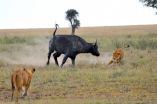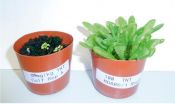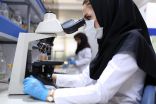(Press-News.org) Much like birds fly in flocks to conserve energy, dolphins swim in pods to mate and find food, and colonies of ants create complex nests to protect their queens, immune cells engage in coordinated behavior to wipe out viruses like the flu. That's according to a new study published today in the journal Science by researchers at the University of Rochester School of Medicine and Dentistry.
The findings reveal, for the first time, how immune cells work together to get to their final destination - the site of an injury or infection. The body is expansive and a virus or bacteria can take hold in any number of locations: the lungs, the throat, the skin, the stomach or the ear, just to name a few. How do immune cells, specifically the ones that are responsible for killing foreign invaders, know where to go?
A team of scientists discovered that cells called neutrophils - the "first responders" of the immune system - are the key. They arrive at the site of injury within an hour of infection and leave a chemical "trail" of sorts behind them. Killer immune cells called T cells use this trail to find the site of injury and subsequently destroy the invader.
In fact, when scientists removed neutrophils (or their trails) from the equation, T cells didn't find the site of injury as quickly or easily; they were more dispersed, fewer made it to the site of injury, and the ones that did were less effective at fighting the infection.
"Immune cells team up and share information to get their job done, much like many types of animals take part in collective behaviors to benefit the group as a whole," said Minsoo Kim, Ph.D., lead study author and associate professor of Microbiology and Immunology at the School's David H. Smith Center for Vaccine Biology and Immunology.
"Understanding how immune cells collaborate to arrive at the site of an infection will lead to new ways to control and improve the body's response to all types of illnesses," added David J. Topham, Ph.D., co-author and the Marie Curran Wilson and Joseph Chamberlain Wilson Professor of Microbiology and Immunology.
For example, in people with autoimmune disorders like multiple sclerosis and lupus, the immune system mistakenly attacks and destroys healthy body tissue. If scientists understood how to disrupt or stop immune cells' movement to healthy tissue, they may be able to improve the quality of life of people living with these devastating diseases.
Similarly, recognizing how to boost the number of immune cells that travel to fight an infection could help scientists design better vaccines for viruses like the flu.
The research is part of a $9 million National Institutes of Health Research Program Project Grant that was awarded to scientists in the School of Medicine and Dentistry in 2014. Led by principal investigator Deborah J. Fowell, Ph.D., dean's professor of Microbiology and Immunology, the goal of the five-year grant is to use cutting-edge imaging techniques to view the immune system while it is fighting infection and disease.
Kim's team used an extremely powerful technology called a multiphoton microscope to watch how various types of immune cells traveled to the trachea or windpipe of mice infected with the flu. The flu typically starts in the airways, and watching immune cells move in whole tissues in real time - as opposed to watching immune cells in a lab dish - provides a much more accurate picture of how the immune systems functions.
The multiphoton microscope is part of the University's Multiphoton Core Facility, which contains state-of-the-art systems enabling in vivo (Latin for "in the living") imaging and analysis. The team at the School of Medicine and Dentistry is one of just a few immunology research groups in the world using this technology. Scientists from around the world will travel to the University in November for the 1st Annual Immune Imaging Symposium.
INFORMATION:
In addition to Kim and Topham, Kihong Lim, Young-Min Hyun, Kris Lambert-Emo, Tara Capece and Seyeon Bae from the University of Rochester and Richard Miller from Northwestern University are authors of the study.
WASHINGTON, DC (September 3, 2015)-- The District of Columbia's needle exchange program prevented 120 new cases of HIV infection and saved an estimated $44 million over just a two-year period, according to a first-of-a-kind study published today by researchers at the Milken Institute School of Public Health (Milken Institute SPH) at the George Washington University.
"Our study adds to the evidence that needle exchange programs not only work but are cost-effective investments in the battle against HIV," says Monica S. Ruiz, PhD, MPH, an assistant research professor in ...
Why are there not more lions when there's plenty of prey on the African savanna?
A research team including two University of Guelph ecologists has discovered an unexpected pattern linking prey and predator species in diverse ecosystems worldwide.
Integrative biology professors John Fryxell and Kevin McCann co-authored the paper, published today in Science. The team included researchers at McGill University, the University of British Columbia and the Perimeter Institute for Theoretical Physics in Waterloo, Ont.
Beyond lions and the gazelles they hunt on the African ...
This news release is available in Japanese.
Regular exposure to bacteria particles and farm dust protects children from allergies because it blunts their inflammatory immune responses, a new mouse study suggests. The study implicates a particular anti-inflammatory enzyme, A20, in this protective effect. While aspects of how allergies develop remain unclear, scientists know they're driven not only by genes but also by environment. Homes with pets, as well as dairy farms - where children breathe dust containing higher doses of fungal particles, cowshed-derived bacteria ...
This news release is available in Japanese.
Ecological communities around the world are richly varied, but a new study finds that many of these diverse communities follow an unexpected, yet consistent pattern: where prey are abundant, there are not proportionally more predators. Instead, as prey biomass increases, the ratio of predator-to-prey biomass decreases. This pattern was systematically identified across different areas, including grasslands, forests, lakes, and oceans, revealing an underlying structural organization of ecosystems. Pinpointing underlying ...
This news release is available in Japanese.
Researchers have identified a mutation in plants that allows them to break down TNT, an explosive that has become highly prevalent in soil in the last century, particularly at manufacturing waste sites, mines, and military conflict zones. TNT, or 2,4,6-trinitrotoluene, is a toxic and persistent environmental pollutant that accumulates in the roots of plants, inhibiting growth and development. The identification of a plant mechanism that not only evades the negative impacts of TNT, but breaks down this harmful substance could ...
This news release is available in Japanese.
A special news edition, Science in Iran, looks closely at the scientific challenges and triumphs of a country that has faced international isolation in recent years. Following an exclusive interview about the Iran nuclear deal with Ali Akbar Salehi, president of the Atomic Energy Organization of Iran, Science International News Editor Richard Stone delves further into the state of Iran's scientific endeavors. Decades of economic sanctions have deprived Iranian scientists of critical scientific resources and collaboration. ...
Biologists at the University of York have taken an important step in making it possible to clean millions of hectares of land contaminated by explosives.
A team from the Centre for Novel Agricultural Products (CNAP) in the University's Department of Biology has unravelled the mechanism of TNT toxicity in plants raising the possibility of a new approach to explosives remediation technology. TNT has become an extensive global pollutant over the last 100 years and there are mounting concerns over its toxicity to biological systems.
The study, which is published in Science, ...
Researchers at VIB (a leading life sciences institute in Flanders, Belgium) and Ghent University have successfully established a causal relationship between exposure to so-called farm dust and protection against asthma and allergies. This breakthrough discovery is a major step forward towards the development of an asthma vaccine. The results of the research were published in the leading journal Science.
It is commonly known that drinking raw cow's milk can provide protection against allergies. A 14-member research team, led by professors Bart Lambrecht and Hamida Hammad ...
Evidence from a new study published in PLOS Computational Biology by researchers from Brown University and led by Assistant Professor Thomas Serre suggests that when we analyze scenery we simply make the easiest judgments first, rather than following a priority order of categories.
There are many ways we understand scenery. Is it navigable or obstructed? Natural or man-made? A face or not a face? In previous experiments, researchers have found that some categorization tasks seem special, in that they occur earlier than others, leading to a hypothesis that the brain has ...
Rodents huddle together when it is cold, they separate when it is warm, and at moderate temperatures they cycle between the warm center and the cold edges of the group. In a new study published in PLOS Computational Biology, Jonathan Glancy, Roderich Gross, Jim Stone and Stuart Wilson from the University of Sheffield found they could simulate huddling by assuming simply that touching individuals in turn brings their temperatures closer to an ideal body temperature. According to the model, these selfish individual behaviours improved the ability of the whole group to regulate ...



